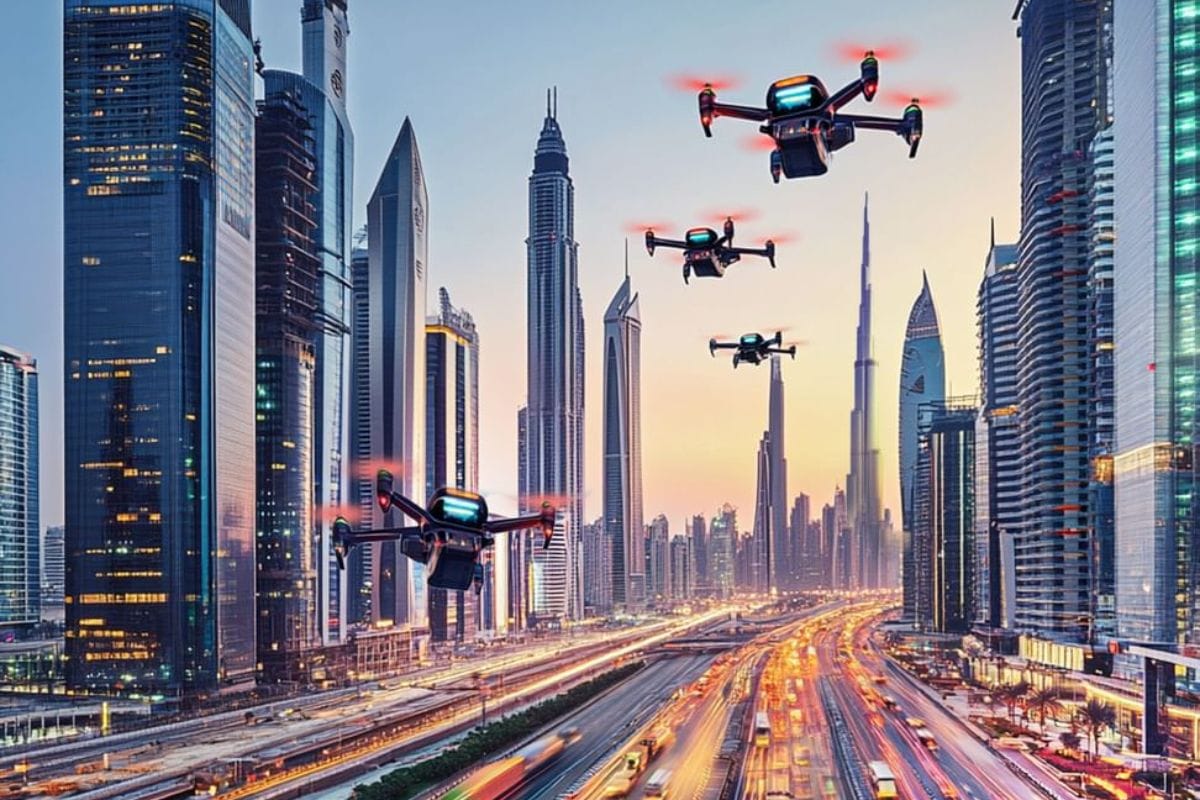The Emirate’s Bold Leap into the Sky: Mapping the Future of Urban Mobility with Aerial Corridors for Air Taxis and Cargo Drones
In a groundbreaking announcement made at the World Governments Summit, the United Arab Emirates (UAE) unveiled an ambitious plan to chart aerial corridors and establish a regulatory framework for both piloted and autonomous flying taxis and cargo drones. This initiative marks a significant step towards revolutionizing urban transportation within the nation and positions the UAE at the forefront of emerging mobility technologies on a global scale.
Over the next 20 months, authorities aim to define and implement these air routes, which will serve not only to connect the country’s major international airports but also to link iconic landmarks and urban areas throughout the UAE. Leading this innovative project are the General Civil Aviation Authority (GCAA) and the Advanced Technology Research Council (ATRC), along with its subsidiary organizations, including the Technology Innovation Institute (TII) and ASPIRE.
The initiative represents more than just a technological advancement; it embodies a vision for a reimagined urban landscape. The proposed aerial pathways will facilitate an integrated network of air mobility solutions that promise to ease the burden of traffic congestion that many cities face today. As urban populations swell and the demand for efficient transportation solutions escalates, the introduction of flying taxis and cargo drones is poised to enhance connectivity while also addressing environmental concerns associated with traditional vehicular travel.
Saif Mohammed Al Suwaidi, Director-General of the GCAA, underscored the transformative potential of air corridor mapping, asserting that the establishment of these aerial routes is a prerequisite for the successful integration of Advanced Air Mobility (AAM) technologies into the UAE’s existing infrastructure. His remarks reflect a broader understanding that modern urban planning must increasingly anticipate disruptive technologies that enhance mobility and improve the quality of urban life.
Further emphasizing the collaborative nature of this initiative, Dr. Najwa Aaraj, CEO of TII, articulated that the partnership would serve to fortify urban connectivity. By leveraging the latest advancements in technology, the UAE aims to not only construct a transport system that is efficient and reliable but one that adheres firmly to the principles of sustainable mobility. Sustainable transport solutions are not merely a luxury but a necessity for cities striving to reduce their carbon footprints and mitigate the harmful effects of pollution.
Contributing to this perspective, Stephane Timpano from ASPIRE elaborated on the potential of this initiative to alleviate pressures on urban infrastructure, commenting that the incorporation of aerial transport could foster the development of resilient cities equipped to accommodate future growth. This nod towards resilience is particularly poignant, given that urban centers worldwide are increasingly confronted with the challenges of rapid population growth and environmental sustainability.
As the UAE forges ahead with its aerial mobility project, it situates itself as a trailblazer in the realm of future transportation systems. This commitment to innovation not only exemplifies the country’s ambition but also sets a new standard internationally for urban mobility solutions. By investing in the infrastructure and regulatory frameworks necessary for such advancements, the UAE is crafting a roadmap that has the potential to influence transportation paradigms globally.
In an era where the demand for efficient and environmentally conscious transportation systems is paramount, the UAE’s pioneering efforts in mapping air corridors for aerial taxis and cargo drones reflect a visionary approach to urban mobility. As cities around the world grapple with congestion and sustainability challenges, the Emirate’s initiative may well serve as a model for others to emulate.
In conclusion, the initiative promises to integrate cutting-edge technology into the fabric of urban life in the UAE, ultimately striving to enhance the quality of living and promote a sustainable future. As we look towards the horizon of transportation innovation, the UAE’s journey into the skies may very well redefine what is possible in urban mobility, setting it apart as a global leader in the landscape of sustainable transport.
Tags: #BusinessNews, #EconomyNews, #UAE, #StartupsEntrepreneurship, #WorldNews

